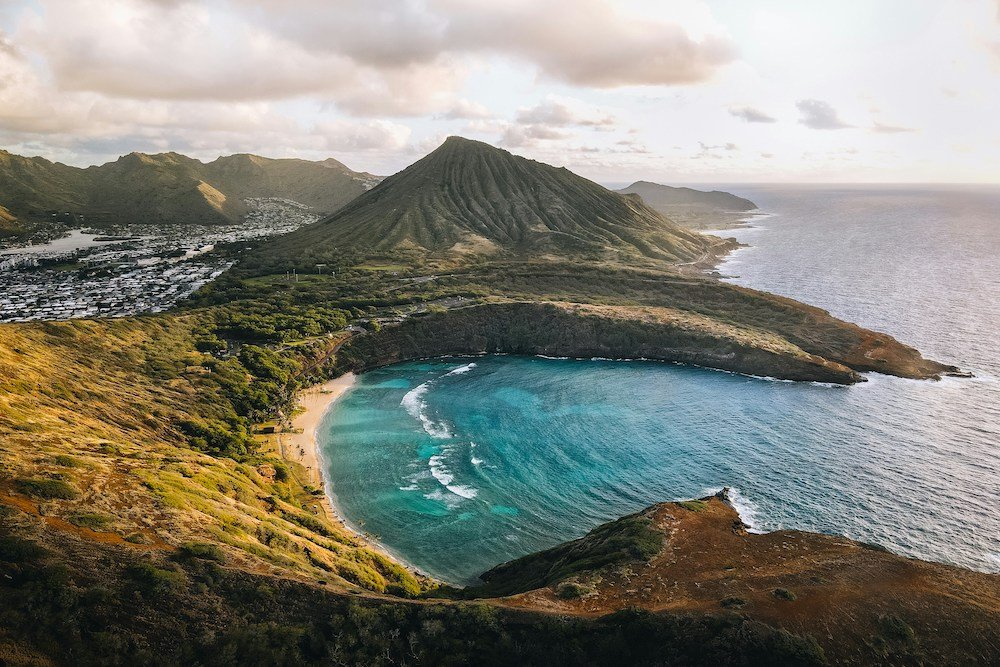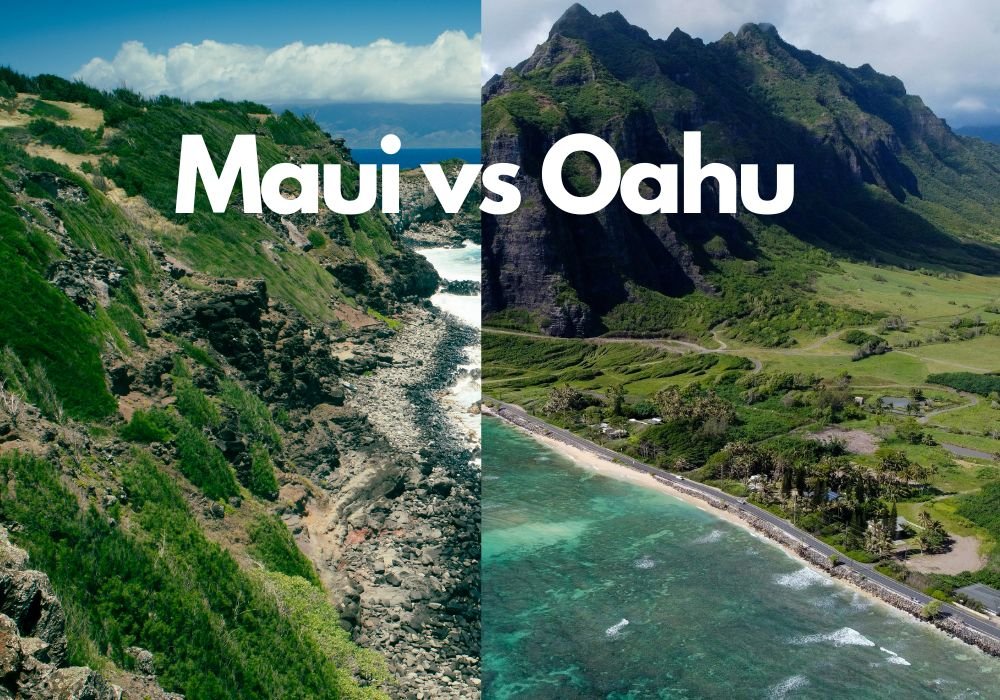
Maui vs Oahu – Which of these island destinations is best for your next holiday?
Hawaii, with its enchanting natural beauty, rich culture, and aloha spirit, stands as a premier destination for travelers seeking an unforgettable getaway.
Among its islands, each offering a unique slice of paradise, Maui and Oahu emerge as two of the most sought-after locales.
These islands beckon with their distinct landscapes, activities, and atmospheres, making the choice between Maui and Oahu a central consideration for visitors planning their Hawaiian vacation.
When it comes to deciding between Maui and Oahu, the decision can shape the entire experience of your Hawaiian adventure.
Maui, often referred to as “The Valley Isle,” is celebrated for its world-renowned beaches, the majestic Haleakalā volcano, and the scenic Road to Hana.
Its laid-back atmosphere is perfect for travelers seeking relaxation amidst natural beauty.
On the other hand, Oahu, known as “The Gathering Place,” offers a vibrant mix of natural and cultural wonders.
From the bustling streets of Honolulu and historic Pearl Harbor to the surf-ready waves of the North Shore, Oahu provides a dynamic setting for an action-packed holiday.
The Maui vs Oahu debate is more than just choosing a destination; it’s about aligning your Hawaiian getaway with your personal preferences and vacation goals.
Whether you’re drawn to the serene landscapes and intimate settings of Maui or the energetic pulse and rich history of Oahu, understanding what each island has to offer is key to making the right choice.
This article dives deep into the heart of the Maui vs Oahu discussion, providing you with a comprehensive comparison to help you decide which island is the right fit for your dream Hawaiian vacation.
Overview of Maui
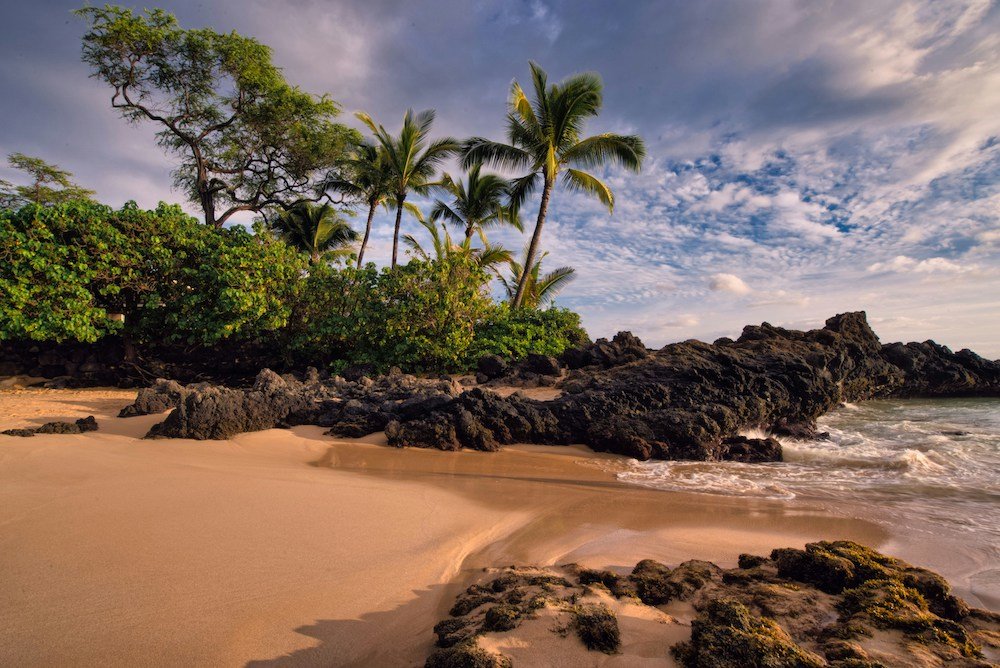
Maui, the second-largest Hawaiian island, is a place of breathtaking diversity and beauty.
With a land area of about 727 square miles and a population of roughly 144,000, Maui combines the best of both worlds: it offers visitors the amenities and comforts of modern living while maintaining a strong sense of local culture and a connection to nature.
The ambiance here is one of relaxed sophistication, with a palpable respect for the land and sea that defines the island’s way of life.
Key Attractions
- Haleakalā National Park: Dominating the landscape is the majestic Haleakalā volcano, a sacred place that offers some of the most spectacular sunrises in the world. The park’s expansive wilderness is a haven for hikers, offering trails through otherworldly landscapes of cinder cones and unique native flora.
- Road to Hana: This legendary drive takes you through lush rainforests, past cascading waterfalls, and along dramatic sea cliffs. The Road to Hana is not just about the destinations along the way but the breathtaking journey itself, filled with photo opportunities and spots to immerse in nature’s splendor.
- Lahaina Front Street: Once the capital of the Hawaiian Kingdom, Lahaina is now a lively hub of activity, known for its historic landmarks, art galleries, and oceanfront dining. Lahaina Front Street is the heart of this area, a perfect place to stroll, shop, and soak up local culture.
- Makena Beach: Among Maui’s numerous stunning beaches, Makena Beach stands out for its golden sands, clear waters, and the backdrop of lava rocks. It’s an ideal spot for sunbathing, swimming, and simply enjoying the serene beauty of Maui’s coastline.
Activities and Experiences Unique to Maui
- Whale Watching: Maui is one of the best places in the world to witness the annual migration of humpback whales. From December to April, these magnificent creatures can be seen frolicking and breaching in the waters off Maui’s shores, offering an unforgettable spectacle.
- Snorkeling at Molokini: The crescent-shaped Molokini crater is a partially submerged volcanic crater that hosts an incredible underwater marine sanctuary. Snorkeling here provides a peek into a vibrant underwater world teeming with colorful fish and coral formations.
- Exploring Upcountry Maui: The rolling hills and cool climates of Upcountry Maui are a contrast to the island’s beach landscapes. This area offers a glimpse into rural Hawaiian life, with attractions like the lavender farms, the paniolo (Hawaiian cowboy) town of Makawao, and the stunning vistas from Haleakalā’s summit.
Maui’s allure lies in its diversity — from the luxury resorts of Wailea to the sacred Iao Valley, the island caters to all types of travelers.
Whether seeking adventure, relaxation, or cultural immersion, Maui provides an array of experiences that make it a captivating destination for those exploring the “Maui vs Oahu” debate.
Its unique blend of natural beauty, rich culture, and aloha spirit ensures that a visit to Maui is not just a vacation, but a journey into the heart of Hawaii.
Overview of Oahu
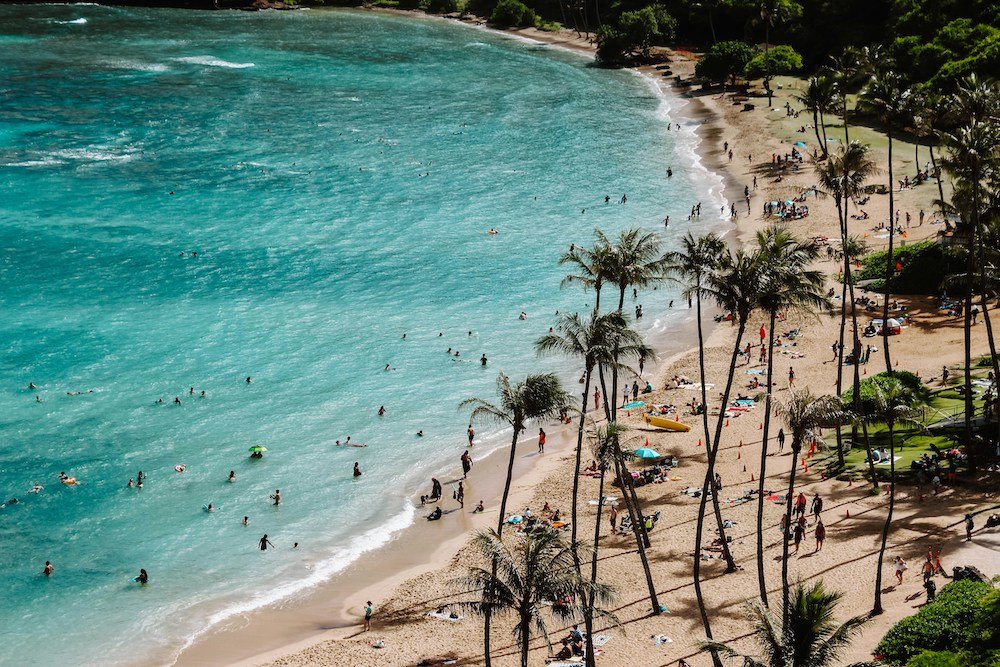
Oahu, known as “The Gathering Place,” is the third-largest of the Hawaiian Islands but stands as the most populous, with over one million residents.
This island combines the natural beauty of Hawaii with the vibrancy of city life, offering visitors a dynamic experience.
Spanning an area of approximately 597 square miles, Oahu is a melting pot of cultures, cuisines, and landscapes, making it an enticing destination for travelers seeking a blend of adventure, history, and relaxation.
Key Attractions
- Waikiki Beach: Perhaps the most famous beach in Hawaii, Waikiki is renowned for its golden sands, clear waters, and excellent surf conditions. This iconic destination is surrounded by high-rise hotels, shops, and restaurants, creating a lively atmosphere that attracts visitors from around the world.
- Pearl Harbor National Memorial: A site of profound historical significance, the Pearl Harbor National Memorial honors the lives lost in the 1941 attack. Visitors can tour the USS Arizona Memorial, the USS Missouri, and the Pearl Harbor Visitor Center to gain insights into this pivotal moment in US history.
- North Shore Surf Spots: Oahu’s North Shore is a mecca for surfers, boasting some of the best waves in the world. Famous spots like Banzai Pipeline, Waimea Bay, and Sunset Beach come alive in the winter months, drawing surf enthusiasts and spectators alike.
- Polynesian Cultural Center: A living museum located on the North Shore, the Polynesian Cultural Center showcases the cultures, traditions, and arts of Hawaii and other Polynesian islands. It’s a fantastic place to learn about the rich heritage of the Pacific through interactive exhibits, performances, and demonstrations.
Activities and Experiences Unique to Oahu
- Surfing Lessons: Oahu offers countless opportunities for visitors to learn to surf, with Waikiki Beach being one of the most popular spots for beginners. Under the guidance of experienced instructors, even novices can catch their first waves in the warm Hawaiian waters.
- Hiking Diamond Head: The hike to the summit of Diamond Head Crater is a must-do for any visitor to Oahu. This relatively easy trek rewards hikers with stunning panoramic views of Honolulu, Waikiki Beach, and the Pacific Ocean.
- Exploring Honolulu’s Cultural and Culinary Scene: As the capital city of Hawaii, Honolulu is a hub of cultural and culinary delights. From the historic Iolani Palace to the vibrant streets of Chinatown, the city offers a wealth of experiences. The culinary scene is equally diverse, with options ranging from traditional Hawaiian cuisine to international gourmet dishes.
Oahu stands out for its unique combination of natural beauty, cultural richness, and urban energy.
Whether you’re exploring the historic sites, catching waves on its famous beaches, or delving into the island’s gastronomic delights, Oahu offers a multifaceted experience that appeals to a wide array of travelers.
In the “Maui vs Oahu” debate, Oahu represents the choice for those who crave the excitement of a bustling city alongside the serene beauty of tropical landscapes.
It’s an island where history, culture, and adventure converge, offering endless possibilities for discovery and enjoyment.
Maui vs Oahu: Natural Beauty and Beaches
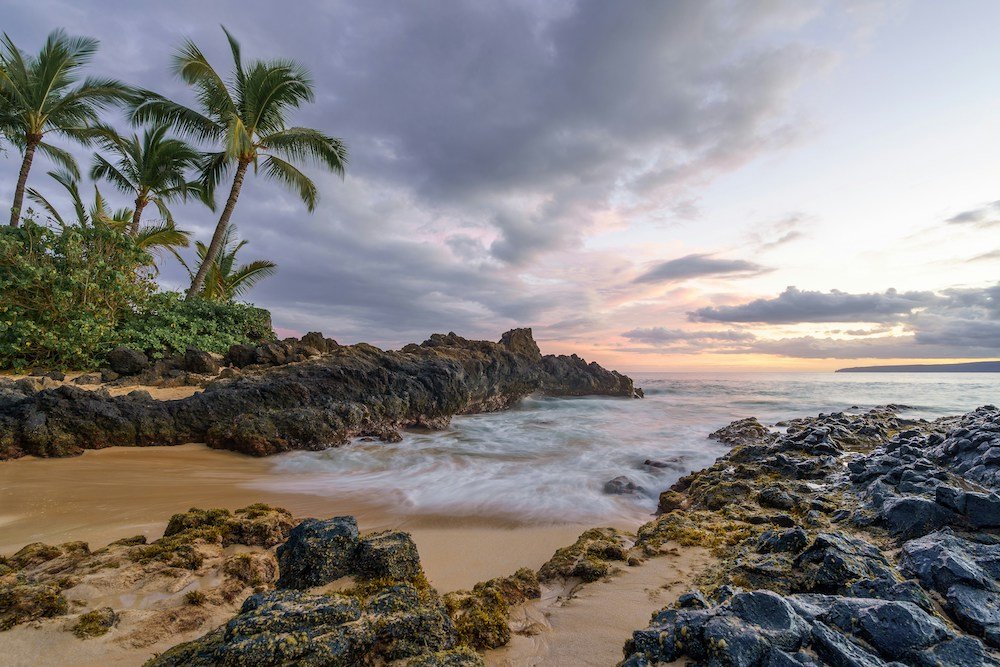
When deciding between Maui and Oahu for a Hawaiian getaway, the natural beauty and beaches of each island play a pivotal role.
Both islands boast stunning landscapes and pristine beaches, but they offer distinctly different experiences that cater to diverse traveler preferences.
Comparison of the Landscapes and Natural Beauty
Maui is renowned for its varied landscapes, from the lush, tropical rainforests along the Road to Hana to the stark, volcanic terrain of Haleakalā National Park.
The island’s topography creates a backdrop of dramatic beauty that is quintessentially Hawaiian.
Maui’s natural wonders extend underwater with vibrant coral reefs teeming with marine life, making it a paradise for nature lovers and outdoor enthusiasts.
Oahu, on the other hand, blends natural beauty with urban landscapes, offering a dynamic environment where mountains meet cityscapes.
The island’s geography is marked by the iconic Diamond Head crater, the verdant Ko’olau Range, and the tranquil Waianae Mountains.
Oahu’s natural beauty is as diverse as its culture, featuring everything from bustling Waikiki Beach to the serene beauty of the North Shore.
Overview of Beaches on Both Islands
The beaches on Maui are among the best in the world, known for their picturesque settings and diverse offerings.
From the expansive, golden sands of Makena Beach to the family-friendly waters of Kapalua Bay, Maui’s beaches cater to all types of beachgoers.
The island’s west and south shores are particularly celebrated for their snorkeling and sunbathing spots.
Oahu’s beaches are equally impressive but offer a different vibe. Waikiki Beach is the epitome of a lively beach scene, surrounded by high-rise hotels and bustling with activities.
For a more laid-back experience, the beaches of the North Shore, like Sunset Beach and Waimea Bay, offer a glimpse into the surf culture that defines Oahu.
The variety of beaches on Oahu ensures that every visitor can find a spot that resonates with their idea of a perfect beach day.
Discussion on Outdoor Activities
Both Maui and Oahu are havens for outdoor activities, though the type and ambiance of these activities vary between the islands.
Maui excels in offering unique natural experiences, such as watching the sunrise atop Haleakalā, snorkeling the clear waters of Molokini, and hiking through the lush Iao Valley.
The island’s geography makes it ideal for adventurous pursuits like zip-lining through the West Maui Mountains or paragliding over the scenic landscapes.
Oahu combines outdoor adventures with cultural experiences.
Hiking Diamond Head for breathtaking views of Honolulu, taking surf lessons at Waikiki, or kayaking to the Mokulua Islands are just a few of the activities that allow visitors to immerse themselves in the island’s natural beauty while being close to urban amenities.
Oahu’s outdoor offerings are as diverse as its landscapes, providing opportunities for both adrenaline-fueled adventures and relaxing explorations.
In the “Maui vs Oahu” comparison, the choice between the islands’ natural beauty and beaches comes down to the type of experience you seek.
Maui offers a more traditional island paradise with its untouched landscapes and scenic beaches, perfect for those looking to connect with nature and escape the hustle and bustle.
Oahu, with its dynamic blend of natural and urban elements, appeals to those who want the best of both worlds — the convenience of city amenities within easy reach of stunning natural attractions.
Maui vs Oahu: Accommodations
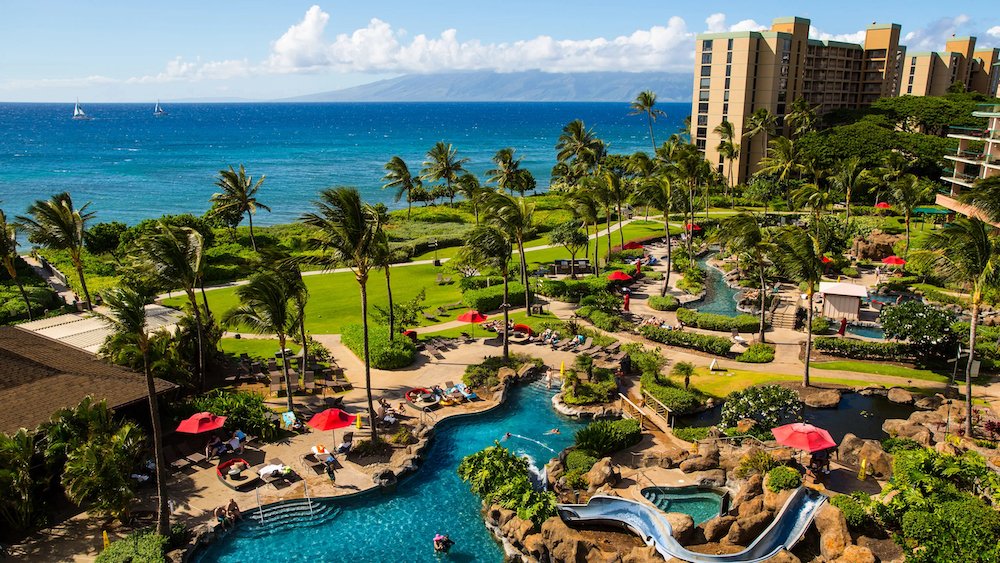
Choosing the right accommodations is crucial to ensuring a memorable Hawaiian vacation.
Both Maui and Oahu offer a wide range of lodging options, from luxurious resorts to budget-friendly hotels and vacation rentals.
Understanding the nuances of what each island has to offer can help travelers select the best fit for their preferences and budget.
Types of Accommodations Available
Maui is famous for its world-class resorts, particularly along the west coast in areas like Wailea and Kaanapali. These resorts offer extensive amenities, including spas, golf courses, and private beaches.
In addition to resorts, Maui has a variety of hotels, bed & breakfasts, and vacation rentals ranging from beachfront condos to secluded rainforest cottages, catering to all types of travelers.
Oahu boasts a diverse array of accommodations, with the epicenter being Waikiki. Here, visitors can find everything from high-rise luxury hotels to more affordable hotel and hostel options.
Beyond Waikiki, vacation rentals and smaller hotels allow for a more localized experience, especially on the North Shore and around Kailua, offering a glimpse into the laid-back Hawaiian lifestyle.
Price Ranges and Recommendations for Different Types of Travelers
On Maui, luxury resorts typically start at around $400 per night, offering premium experiences and amenities.
For those seeking mid-range options, hotels and vacation rentals can range from $150 to $350 per night, depending on the location and time of year.
Budget travelers can find accommodations starting at $100 per night, especially in vacation rentals and smaller hotels off the beaten path.
Oahu presents a wider range of prices due to its larger selection of accommodations.
Luxury hotels in Waikiki and exclusive resorts on the island’s more secluded areas can cost upwards of $500 per night.
Mid-range options in and around Waikiki are plentiful, with prices ranging from $200 to $400 per night.
Budget-conscious travelers can find hostels and budget hotels starting at $50 to $150 per night, particularly in the Waikiki area.
Comparison of the Luxury and Budget Options on Both Islands
The luxury accommodations on Maui are renowned for their exceptional service, stunning locations, and comprehensive amenities, making them ideal for travelers seeking a pampered experience.
Maui’s luxury resorts often feature unique elements like private lanais, beachfront access, and award-winning restaurants.
Oahu’s luxury accommodations, especially in Waikiki, combine world-class service with the convenience of urban amenities.
Luxury hotels on Oahu often boast spectacular ocean views, rooftop pools, and easy access to shopping, dining, and entertainment.
For budget travelers, Maui offers a more limited but charming selection of affordable accommodations, encouraging exploration of the island’s natural beauty.
Budget options on Maui tend to provide a quieter, more intimate experience.
On Oahu, budget accommodations are more abundant and varied, catering to a younger crowd or those looking to prioritize experiences over lodging luxury.
The island’s budget options are particularly appealing for travelers eager to explore Oahu’s cultural and natural attractions without breaking the bank.
In the “Maui vs Oahu” debate, the choice of accommodations ultimately depends on the traveler’s budget, preferences for luxury or simplicity, and desired proximity to island attractions.
Maui is ideal for those seeking a tranquil or upscale beach retreat, while Oahu offers a dynamic range from luxury to budget accommodations amidst a bustling island vibe.
Maui vs Oahu: Dining and Nightlife
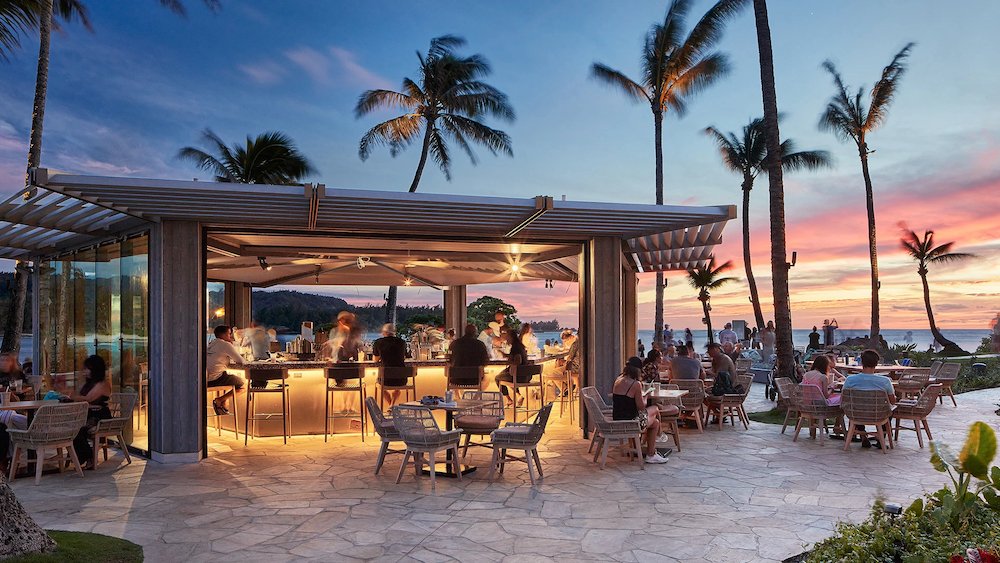
The Hawaiian Islands are a melting pot of cultures, and this diversity is vividly reflected in their dining scenes.
Maui and Oahu each offer unique culinary experiences, from high-end restaurants to food trucks serving local delights.
The nightlife on each island also presents distinct vibes, catering to a wide array of preferences.
Overview of the Dining Scene in Maui and Oahu
Maui is known for its farm-to-table dining experiences, emphasizing fresh, locally-sourced ingredients.
The island’s dining scene ranges from beachside luau feasts and casual seafood shacks to upscale restaurants offering sophisticated Pacific Rim cuisine.
Maui’s culinary scene is a testament to its rich agricultural land, with many establishments boasting ocean-to-table and farm-to-table credentials.
Oahu, particularly in Honolulu and Waikiki, offers a dynamic culinary landscape that includes a mix of traditional Hawaiian food, international cuisines, and everything in between.
The island is home to a vibrant food scene that features everything from historic diners and family-run Hawaiian eateries to cutting-edge restaurants led by world-renowned chefs.
Oahu’s diverse dining options reflect its cosmopolitan nature, offering flavors from around the world.
Comparison of Local Cuisines, Signature Dishes, and Culinary Experiences
On Maui, local cuisine is all about fresh seafood, tropical fruits, and traditional Hawaiian dishes.
Signature dishes include poke bowls, banana bread along the Road to Hana, and Maui-grown coffee.
Culinary experiences not to miss include attending a traditional luau, where guests can enjoy Hawaiian specialties like kalua pig, poi, and haupia amidst live music and hula dancing.
Oahu excels in presenting a fusion of culinary traditions, with local dishes like loco moco, shave ice, and spam musubi widely available.
The island’s signature culinary experience is perhaps the exploration of its food truck scene, offering everything from garlic shrimp to fusion tacos.
Dining in Oahu is an adventure in itself, with options to enjoy upscale Hawaiian-fusion cuisine, participate in an authentic luau, or explore the bustling farmers markets.
Nightlife Options: Bars, Clubs, and Evening Entertainment
Maui offers a laid-back nightlife scene, with a focus on beach bars, live music, and cultural shows.
The town of Lahaina is the center of Maui’s nightlife, featuring oceanfront bars and casual pubs where visitors can enjoy a tropical cocktail while listening to live Hawaiian music.
For those seeking a more intimate evening, stargazing tours on Haleakalā offer a unique night-time experience.
Oahu boasts a more vibrant nightlife, especially in Waikiki, where nightclubs, beach bars, and lounges cater to every taste.
The island’s nightlife offers everything from high-energy dance clubs and karaoke bars to relaxed beachfront cocktails and live music venues.
Oahu also hosts a variety of evening shows and events, including cultural performances and international music acts.
In the “Maui vs Oahu” comparison, your dining and nightlife preferences can significantly influence your choice.
Maui is ideal for those seeking a relaxed atmosphere with a focus on local flavors and ingredients, offering a more intimate and laid-back dining and nightlife experience.
Oahu, with its eclectic mix of dining options and bustling nightlife, caters to those looking for variety and excitement, blending traditional Hawaiian culture with modern, cosmopolitan vibes.
Maui vs Oahu: Cultural Experiences
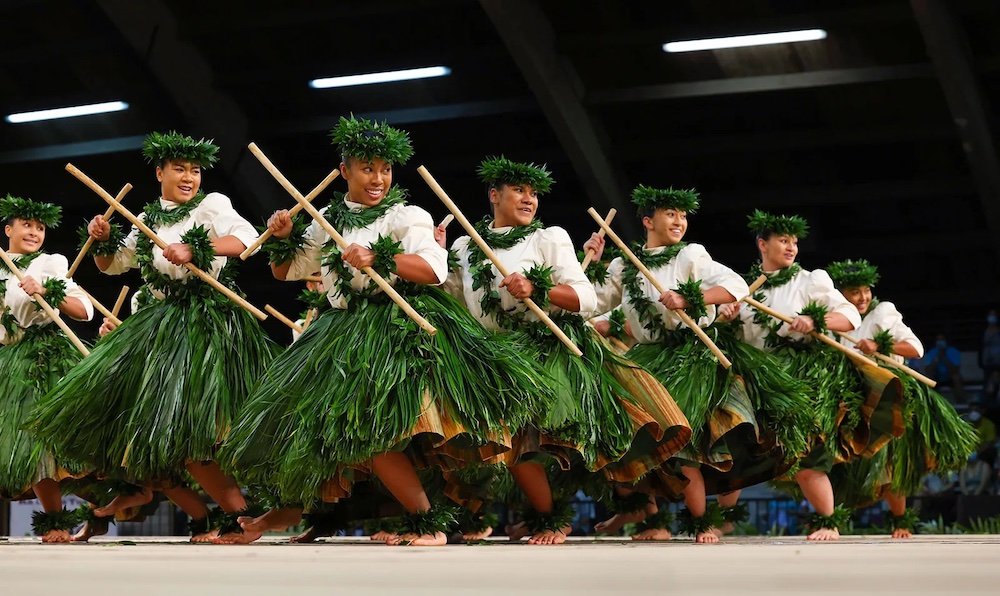
Hawaii’s rich history and vibrant cultural tapestry are vividly showcased across all its islands, with Maui and Oahu offering unique perspectives and experiences.
From historical sites that speak volumes of Hawaii’s past to festivals celebrating Hawaiian culture, each island offers distinct ways for visitors to immerse themselves in the local heritage.
Discussion on Hawaiian Culture and History as Experienced on Each Island
Maui offers a deeply rooted cultural experience, centered around its lush landscapes and historical sites.
The sacred Iao Valley, home to the iconic Iao Needle, is not only a natural wonder but also a significant historical site where the Battle of Kepaniwai took place.
Additionally, the town of Lahaina, once the capital of the Kingdom of Hawaii and the residence of the kings, provides a glimpse into Hawaii’s royal past.
Cultural experiences in Maui often involve interactive opportunities, such as lei making, hula lessons, and traditional Hawaiian luaus, which reflect the island’s commitment to preserving and sharing its heritage.
Oahu, being home to the state capital, Honolulu, offers a rich tapestry of Hawaiian culture intertwined with the history of the monarchy, immigration, and pivotal moments in U.S. history.
The Bishop Museum in Honolulu is a treasure trove of Hawaiian artifacts, royal family heirlooms, and exhibits on the Polynesian cultures.
Pearl Harbor National Memorial provides a somber yet educational experience, highlighting a crucial part of not only American but global history.
Cultural sites such as the Iolani Palace, the only royal palace in the United States, offer visitors a unique insight into the life of the Hawaiian monarchy.
Key Cultural Sites and Museums to Visit
In Maui, the Lahaina Historic Trail guides visitors through more than 55 historical sites, including the Old Lahaina Courthouse and the ancient Banyan Tree. The Maui Ocean Center, while primarily an aquarium, offers insights into the island’s marine life and its significance to Hawaiian culture.
Oahu hosts several must-visit cultural sites, including the aforementioned Bishop Museum and Iolani Palace.
The Polynesian Cultural Center, located on the North Shore, showcases the diverse cultures of Polynesia with authentic villages, performances, and activities, providing an immersive experience that highlights the connections between the cultures of the Pacific.
Local Festivals, Events, and Opportunities to Engage with the Local Community
Maui celebrates its culture through events like the Maui Whale Festival, the Lahaina Banyan Tree Lighting, and the East Maui Taro Festival.
These gatherings not only celebrate the island’s natural beauty and produce but also its cultural heritage, offering visitors a chance to engage with the community in meaningful ways.
Oahu hosts a wide array of cultural festivals and events, such as the King Kamehameha Celebration Floral Parade, the Honolulu Festival, and the Prince Lot Hula Festival.
These events provide insights into Hawaii’s traditions, arts, and community spirit.
The Aloha Festivals, celebrated statewide, are particularly vibrant on Oahu, featuring a royal court procession, live music, and hula dancing.
In choosing between Maui vs Oahu for cultural experiences, consider what aspects of Hawaiian culture and history most interest you.
Maui offers a more intimate connection with the island’s natural landscape and history, ideal for those seeking a serene cultural immersion.
Oahu, with its historical significance and cultural diversity, presents a broader spectrum of cultural experiences, suitable for those looking to explore a wide array of Hawaiian traditions and history within a bustling setting.
Maui vs Oahu: Family and Recreational Activities
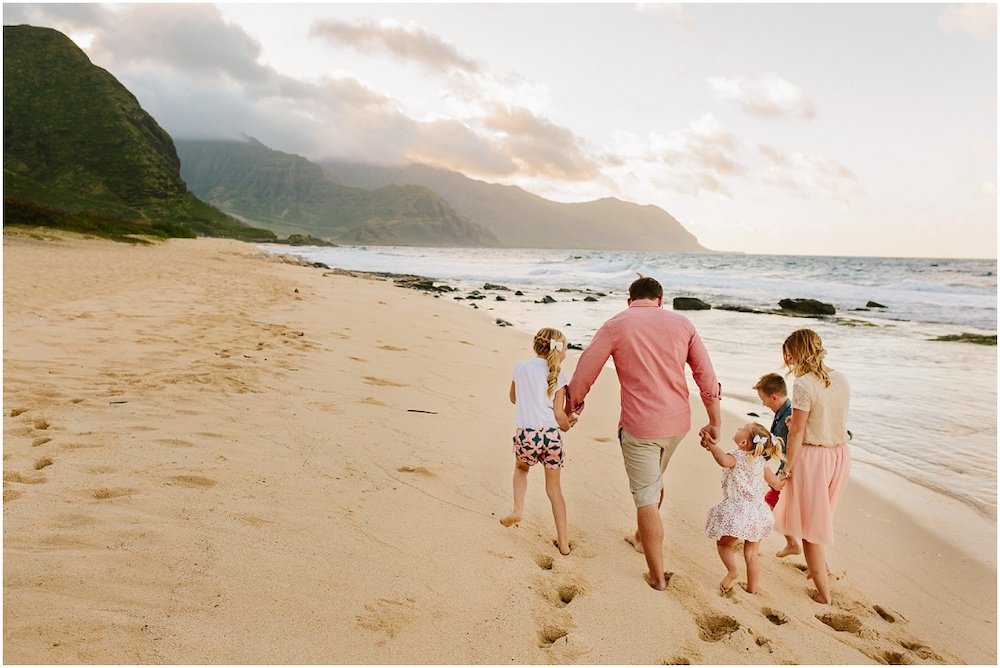
When planning a Hawaiian vacation that caters to family members of all ages, both Maui and Oahu shine with their array of activities and attractions.
However, the type and vibe of these activities vary between the islands, making it important to consider what experiences will best suit your family’s interests.
Comparison of Family-Friendly Activities and Attractions
Maui is often celebrated for its natural attractions and outdoor adventures that appeal to families seeking a more laid-back or nature-oriented trip.
The Maui Ocean Center offers educational insights into the local marine life with interactive exhibits perfect for children.
The beaches of Maui, such as Baby Beach in Lahaina and Wailea Beach, are known for their calm waters and safety for younger swimmers.
For families interested in exploring the island’s natural beauty, the Road to Hana provides a full day of adventure with waterfalls, hiking spots, and stunning ocean views easily accessible for all ages.
Oahu provides a mix of historical, cultural, and outdoor activities suitable for families.
The Honolulu Zoo and Waikiki Aquarium are perfect for younger children, offering close encounters with exotic animals and marine life.
For history-loving families, visiting Pearl Harbor and the USS Arizona Memorial offers a poignant look at American history.
Adventure-seekers will find plenty to do as well, from learning to surf on Waikiki Beach to hiking up Diamond Head for spectacular views of the island.
Overview of Recreational Activities Suitable for Different Age Groups
In Maui, recreational activities span from snorkeling in Molokini Crater, where clear waters and abundant marine life create a snorkeler’s paradise, to zip-lining through the lush West Maui Mountains.
The island’s natural landscape provides a playground for activities like horseback riding, ATV tours, and eco-adventures in the Haleakalā National Park.
Oahu offers a wide array of recreational activities that cater to different interests and age groups.
Besides the surf lessons that are a hit with teenagers and adults alike, families can enjoy kayaking to the Mokulua Islands, taking a submarine scooter tour, or exploring the island’s interior on an ATV adventure.
Oahu’s diverse landscapes make it an ideal location for hiking, with trails ranging from the easy Manoa Falls hike to the more challenging Koko Head Crater Trail.
Recommendations for Unique Experiences on Each Island
For a unique experience in Maui, consider a visit to the Upcountry region, where the Ali’i Kula Lavender Farm and the Surfing Goat Dairy offer tours and activities in a picturesque setting.
Another unforgettable experience is a sunrise or sunset viewing at the Haleakalā summit, a moment that captures the serene beauty of the island.
Oahu offers its own set of unique experiences, such as attending a traditional Hawaiian luau, where families can enjoy local cuisine, music, and dance.
Exploring the cultural richness of the Polynesian Cultural Center, where interactive villages and performances bring Polynesian history and traditions to life, is another must-do.
For those looking to see Oahu from a different perspective, helicopter tours offer breathtaking views of the island’s cliffs, beaches, and landmarks.
When weighing Maui vs Oahu for family and recreational activities, consider the interests and energy levels of your family members.
Maui is ideal for families seeking a balance of relaxation and nature-based adventures, offering serene beauty and outdoor activities that immerse visitors in the island’s landscapes.
Oahu, with its blend of cultural, historical, and recreational activities, caters to families looking for a diverse vacation experience with plenty of opportunities for learning and adventure.
Maui vs Oahu: Accessibility and Transportation
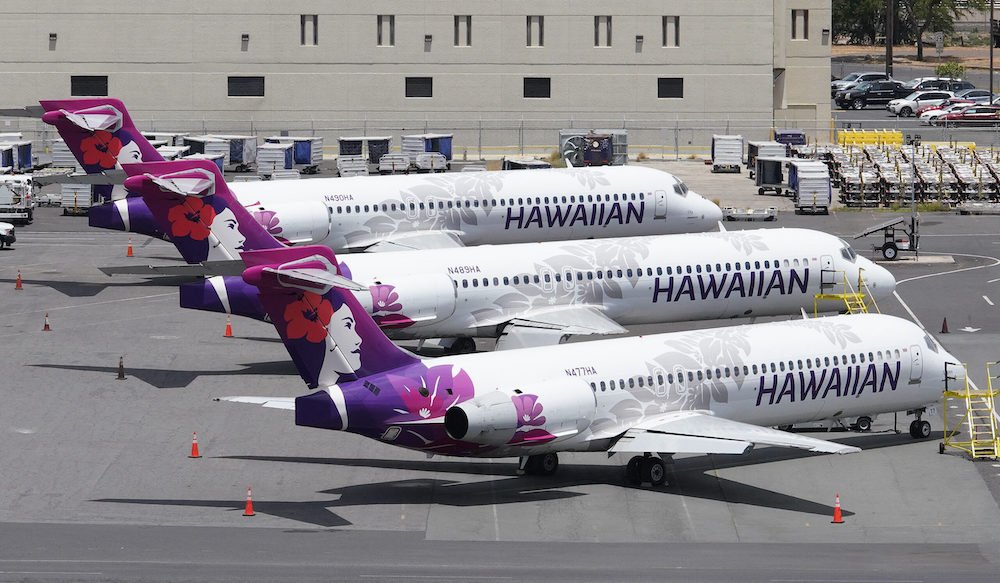
The ease of getting to and around a vacation destination can significantly impact your travel experience.
Both Maui and Oahu have their own characteristics when it comes to accessibility and transportation, which can influence your decision based on convenience and travel preferences.
Discussion on Getting to and Around Each Island
Maui is served by Kahului Airport (OGG), the main airport on the island, which welcomes both international and interisland flights. Smaller airports like Kapalua Airport (JHM) and Hana Airport (HNM) cater to interisland travel.
Once on the island, getting around Maui is best done by car, as this allows visitors the freedom to explore the island’s diverse landscapes at their own pace, including the famous Road to Hana and remote areas like Upcountry Maui and the Haleakalā National Park.
Oahu is home to Daniel K. Inouye International Airport (HNL) in Honolulu, the largest airport in Hawaii, making it highly accessible from anywhere in the world.
Oahu boasts better public transportation options than Maui, with TheBus offering extensive coverage around the island, including major tourist areas, shopping centers, and beaches.
However, renting a car can still be beneficial for visiting less accessible spots like the North Shore or the hiking trails in the Ko’olau Range.
Tips for Navigating Each Island Efficiently
For navigating Maui, it’s advisable to plan your travels around peak traffic times, especially when exploring popular areas like Lahaina or the Road to Hana.
Many of Maui’s roads are winding and narrow, so allowing extra travel time is wise.
Also, consider splitting your stay between two locations on the island to reduce driving time and better enjoy each area.
In Oahu, utilizing TheBus for short trips within Honolulu and Waikiki can save time and hassle associated with parking.
For longer day trips or exploring more remote areas, renting a car for part of your stay might be more convenient.
Staying informed about traffic patterns, especially during rush hour in Honolulu, can help in planning your day effectively.
Renting Cars vs. Using Public Transportation
On Maui, renting a car is almost a necessity for those looking to fully explore the island, as public transportation options are limited and do not cover many of the island’s top attractions comprehensively.
A rental car provides the flexibility to discover Maui’s many hidden gems at your leisure.
Oahu offers more flexibility with the choice between public transportation and renting a car.
For visitors planning to spend most of their time in Honolulu and Waikiki, TheBus and short-term rental services like Biki bikes can be convenient and cost-effective.
However, renting a car for a few days might be worthwhile for those wishing to explore beyond the city, such as the Polynesian Cultural Center, the North Shore, or the hiking trails scattered across the island.
In the “Maui vs Oahu” consideration, think about how much you want to explore beyond the well-trodden path and your comfort level with driving or using public transportation.
While Maui demands more self-directed exploration typically facilitated by a rental car, Oahu offers a blend of easy urban accessibility and the option to venture out with a vehicle for more secluded adventures.
Maui vs Oahu: Pros and Cons

Both Maui and Oahu offer unique experiences that cater to various traveler preferences.
Understanding the advantages and disadvantages of each island can help solo travelers, couples, families, and adventure seekers choose the destination that best aligns with their vacation vision.
For Solo Travelers
Maui Pros:
- Abundance of natural beauty and serene spots for reflection and relaxation.
- Friendly local communities and safe environment conducive to solo exploration.
Maui Cons:
- Limited nightlife and socializing opportunities compared to Oahu.
- May require a car rental to fully explore the island, increasing costs.
Oahu Pros:
- Vibrant social scene with more opportunities to meet people.
- Extensive public transportation, making it easier and more affordable to navigate.
Oahu Cons:
- Busier and more crowded, particularly in Waikiki, which may not appeal to those seeking solitude.
For Couples
Maui Pros:
- Romantic settings, from beach sunsets to luxury resorts, perfect for honeymoons or getaways.
- Varied landscapes offering both adventure and relaxation in a more intimate setting.
Maui Cons:
- Premium experiences and accommodations can come at a higher cost.
Oahu Pros:
- Wide range of dining and entertainment options for memorable date nights.
- Mix of cultural and historical sites for enriching experiences together.
Oahu Cons:
- Certain areas can feel overly touristy, potentially detracting from the intimacy of a couple’s escape.
For Families
Maui Pros:
- Family-friendly beaches and resorts with activities for all ages.
- Natural attractions that offer educational experiences in a fun way.
Maui Cons:
- Exploring the island to its fullest may require significant driving, which can be challenging with young children.
Oahu Pros:
- Diverse attractions that cater to different interests, ensuring something for every family member.
- Better infrastructure and amenities designed to accommodate families.
Oahu Cons:
- Popular attractions can be crowded, requiring advanced planning for a smooth experience.
For Adventure Seekers
Maui Pros:
- Unique natural phenomena and landscapes for hiking, snorkeling, and exploring.
- Less crowded outdoor spaces allowing for a more immersive adventure experience.
Maui Cons:
- Adventure activities and tours can be expensive, potentially stretching the budget.
Oahu Pros:
- A wide variety of adventure sports, including surfing, skydiving, and hiking.
- More accessible adventure opportunities, even within close proximity to Honolulu.
Oahu Cons:
- Adventure spots can be busier, especially during peak seasons, possibly detracting from the thrill.
General Considerations
Budget: Oahu may offer a wider range of budget-friendly accommodations and activities, especially with its robust public transportation system. Maui, while potentially more costly, offers exclusive experiences that can justify the expense.
Interests and Travel Goals: For travelers seeking a tranquil, nature-focused retreat, Maui’s landscapes and ambiance have a slight edge. Oahu, with its dynamic mix of urban excitement and natural beauty, caters well to those looking for a varied experience.
In summary, Maui is ideal for those seeking a serene or romantic getaway immersed in natural beauty, offering a slower pace of life and a high degree of personal space.
Oahu appeals to those seeking a blend of beach relaxation, cultural experiences, and the convenience of urban amenities, suitable for families and travelers looking to mix relaxation with exploration.
Conclusion
Choosing between Maui and Oahu for your Hawaiian getaway presents a delightful dilemma, each island offering its unique charm, adventures, and cultural experiences.
Throughout this article, we’ve explored the natural beauty, accommodations, dining and nightlife, cultural experiences, and recreational activities that define Maui and Oahu.
We’ve delved into the practicalities of accessibility and transportation and weighed the pros and cons for various types of travelers.
Maui captivates with its lush landscapes, tranquil beaches, and the spirit of aloha that permeates its towns and communities.
It’s an island where nature’s majesty is always within reach, offering a serene backdrop for relaxation, adventure, and romance.
Ideal for those seeking a more laid-back vacation, Maui promises an intimate experience with the beauty and culture of Hawaii.
Oahu, by contrast, pulses with energy and diversity. From the bustling streets of Honolulu to the serene shores of the North Shore, Oahu blends urban excitement with natural splendor.
It’s a destination that caters to history buffs, cultural enthusiasts, and adventure seekers alike, offering a rich tapestry of experiences that showcase the multifaceted beauty of Hawaii.
Choosing between Maui and Oahu ultimately comes down to what you envision for your Hawaiian vacation.
Whether it’s the quiet allure of hidden waterfalls and scenic drives or the vibrant allure of historic landmarks and lively streets, your decision will reflect your personal preferences and the experiences you wish to cherish.
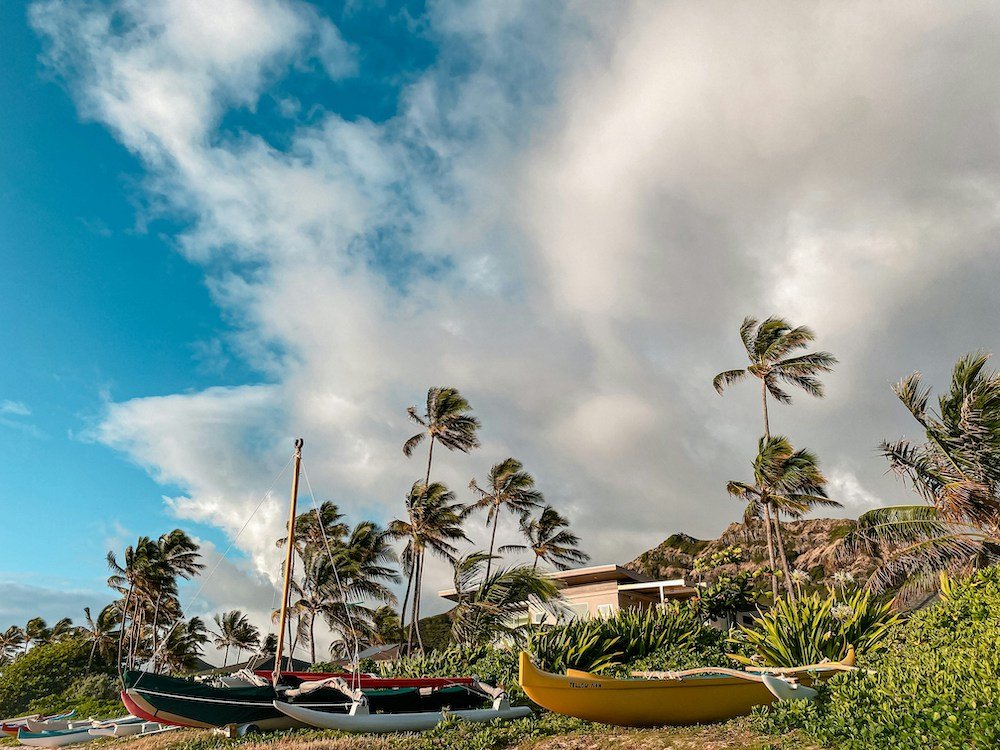
FAQ’s About Maui vs Oahu:
Why is Maui famous?
Maui is famous for its stunning natural landscapes, including the majestic Haleakalā volcano, the scenic Road to Hana, and its breathtaking beaches like Wailea and Kaanapali.
The island is also renowned for its rich marine life, making it a prime spot for snorkeling and whale watching.
Maui’s unique blend of natural beauty, outdoor adventure, and the Aloha spirit contribute to its fame as a premier travel destination.
Is it expensive in Maui?
Yes, Maui can be expensive. The cost of accommodations, dining, and activities can be higher compared to many other destinations, largely due to its remote location and the expense of importing goods to the island.
Budgeting carefully and planning in advance can help manage costs, with options available for a range of budgets, from luxury resorts to more affordable vacation rentals.
How do I get from Maui to Honolulu?
The most common way to get from Maui to Honolulu is by air.
Multiple daily flights connect Maui’s Kahului Airport (OGG) with Honolulu International Airport (HNL) on Oahu, with a flight time of approximately 30 to 45 minutes.
Airlines such as Hawaiian Airlines, Southwest Airlines, and Mokulele Airlines offer these short interisland flights.
What is the myth of Maui?
The myth of Maui is a significant part of Polynesian mythology, with variations of the story existing across the Pacific Islands.
In Hawaiian mythology, Maui is a demigod known for his trickster qualities and incredible feats, such as slowing down the sun to lengthen the day and fishing up the Hawaiian Islands from the sea.
These tales highlight Maui’s strength, intelligence, and the cultural importance of nature and creation in Hawaiian storytelling.
Why do people love Maui so much?
People love Maui for its diverse natural beauty, from the serene beaches and underwater wonders to the lush rainforests and volcanic landscapes.
The island’s relaxed pace of life, friendly communities, and rich cultural experiences also draw visitors.
Maui offers a blend of adventure, relaxation, and cultural immersion that appeals to a wide range of travelers, making it a beloved destination.
Is Maui or Honolulu better?
Whether Maui or Honolulu is better depends on personal preferences and travel goals.
Maui offers a more laid-back experience focused on natural beauty and outdoor activities, ideal for those seeking relaxation and adventure in nature.
Honolulu, located on Oahu, offers a vibrant urban environment with a rich history, cultural diversity, and access to both city amenities and natural attractions.
Your choice should align with your interests, whether they lie in serene natural settings or a dynamic urban experience.
Why is Oahu so famous?
Oahu is famous for its historical significance, cultural richness, and natural beauty. It is home to Pearl Harbor, the only royal palace in the United States (Iolani Palace), and the iconic Waikiki Beach.
Oahu offers a blend of urban and natural attractions, including bustling Honolulu, the surfing capital of the North Shore, and stunning hiking trails. Its diverse attractions make it a microcosm of Hawaii’s allure.
Is Oahu as pretty as Maui?
Oahu and Maui both boast stunning landscapes, but they offer different types of beauty.
Maui is often celebrated for its picturesque, natural landscapes and a more consistent island-wide aesthetic of lushness and beachfront.
Oahu, while also beautiful, offers a contrast between the urban skyline of Honolulu and the natural splendor of areas like the North Shore and the Windward Coast.
Beauty is subjective, and the preference between Oahu’s diverse landscapes and Maui’s natural wonders depends on individual taste.
Is Oahu a different island than Honolulu?
Honolulu is not a separate island but the largest city and the capital of Hawaii, located on the island of Oahu.
Oahu is one of the eight main Hawaiian Islands and hosts Honolulu, which includes the state’s government, major commercial centers, and cultural institutions. When people refer to visiting Honolulu, they are visiting Oahu.
Is it okay to go to Oahu right now?
As travel advisories can change due to various factors like weather conditions, health concerns, and safety issues, it’s best to check current travel recommendations from official sources such as the Hawaii Tourism Authority or the CDC before planning a trip to Oahu or any destination.
Can you walk everywhere in Oahu?
While you cannot walk everywhere in Oahu due to its size and varied geography, many tourist areas, particularly in Honolulu and Waikiki, are pedestrian-friendly.
For exploring more distant attractions like the North Shore, Polynesian Cultural Center, or hiking trails, you would need a car or use public transportation.
Why is Oahu so expensive?
Oahu, like much of Hawaii, is expensive due to its remote location in the Pacific Ocean, which increases the cost of importing goods.
Additionally, high demand from tourists and limited land for development contribute to higher prices for accommodations, dining, and services.
The cost of living and visiting is also impacted by the island’s popularity as a world-class destination.
